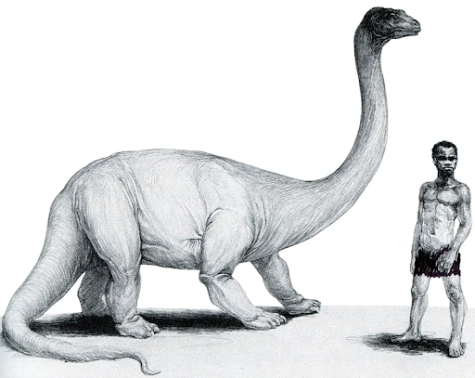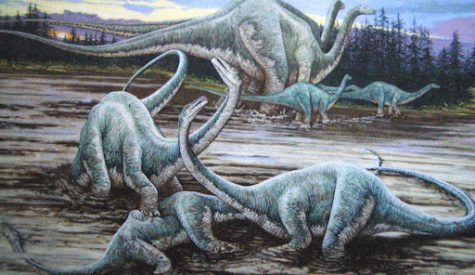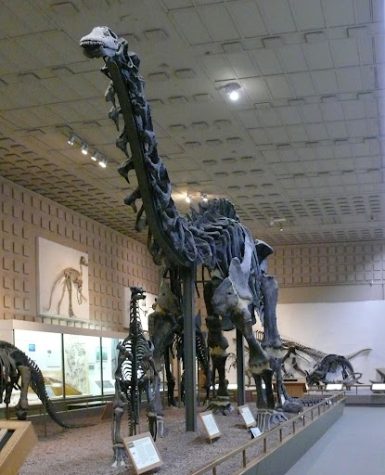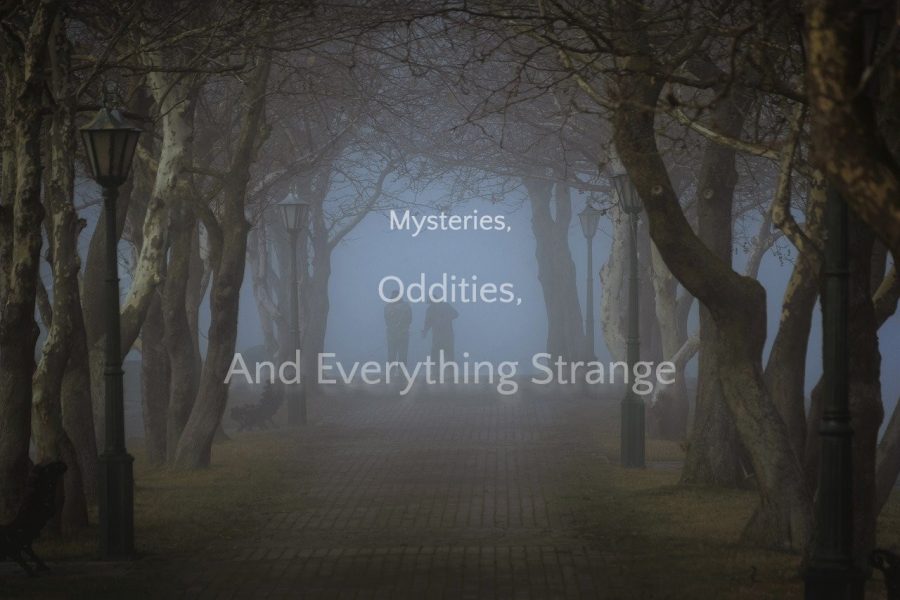Mysteries, Oddities, and Everything Strange: Mokele-mbembe
February 18, 2022
Mokele-mbembe: One Who Stops the Flow of Rivers
The Congo River is one of the longest rivers in the world. Reaching over 2,900 miles in length, the river flows from the Atlantic Ocean to the heart of Africa. It is the namesake of two countries, the Republic of the Congo  and the Democratic Republic of the Congo, and it is the deepest river in the world, reaching as far as 720 feet deep. It was carved over millions of years of erosion and tectonic plate shifting, and its exploration was one of the feats of African Imperialism. Now, what does the Congo River have to do with anything? Well, a 720-foot deep river can hold a countless number of mysterious creatures in it. That includes the Mokele-mbembe, a creature with a dinosaur-like appearance and a folk legend to boot. So what is the Mokele-mbembe: is it really a river stopper, or is it just a lucky tree trunk?
and the Democratic Republic of the Congo, and it is the deepest river in the world, reaching as far as 720 feet deep. It was carved over millions of years of erosion and tectonic plate shifting, and its exploration was one of the feats of African Imperialism. Now, what does the Congo River have to do with anything? Well, a 720-foot deep river can hold a countless number of mysterious creatures in it. That includes the Mokele-mbembe, a creature with a dinosaur-like appearance and a folk legend to boot. So what is the Mokele-mbembe: is it really a river stopper, or is it just a lucky tree trunk?
The Mokele-mbembe was first described in the book Beasts and Men by Carl Hagenback in 1909. Hagenback told his tale of a “half elephant, half dragon” roaming the lands of Zimbabwe (then Rhodesia), recounting tall tales two different individuals told to him. Hagenback described it as a creature similar to a Brontosaurus, with a long neck and thick, four-legged body. One of Hagenback’s accounts denotes a hippopotamus shortage at nearby Lake Bangweulu, and the tribe native to the area attributed to a massive beast. Alfred Aloysius Smith detailed a creature of similar caliber in Gabon in 1927. From there, tales continued to surface of a predatory African beast with leathery skin and strong tails. Only when the legend of the Mokele-mbembe reached coasts outside of Africa did people begin to interpret the tales as dinosaurs.
when the legend of the Mokele-mbembe reached coasts outside of Africa did people begin to interpret the tales as dinosaurs.
The legend of the Mokele-mbembe skyrocketed in popularity in the 1910’s as the legend arrived in North America and Europe. A German captain named Ludwig Freiherr von Stein zu Lausnitz was surveying Cameroonian lands in 1913 when he supposedly encountered the foreign creature in the jungles. He described it carefully so as to not sound crazy or outlandish, claiming it appeared similar to an alligator that lived in caves off river-bends.
A researcher named Roy Mackal decided to pick up the case and venture into the heart of Africa to find evidence of the Mokele-mbembe. He ventured into the Congo and emerged with plenty of evidence of the creature’s existence. One of the most famous is a footprint of what seems like a bulky, four-legged creature, along with plenty of descriptive reports. He also told of the Likouala Swampland, where a sauropod supposedly roamed, according to native people. It fought with hippos for food and was even killed by a member of the Kabonga tribe nearby. Nothing came of this supposed evidence, though, as no mention of the Mokele-mbembe’s corpse was ever brought to light in Mackal’s reports.
 In 2012, a Missourian man named Stephen McCullah created a $27,000 kickstarter to fund a trip for him and his friends to travel to Africa and search for the Mokele-mbembe even though they lacked the proper knowledge of survival tactics and cryptids. This adventure never amounted to any success, but it is one of dozens of attempts in the past decade or two to locate the living dinosaur. Many news and nature TV channels, such as SyFy, the History Channel, and National Geographic have attempted their own investigations into the Mokele-mbembe, basing their evidence on the accounts of local tribes people and turning up empty-handed.
In 2012, a Missourian man named Stephen McCullah created a $27,000 kickstarter to fund a trip for him and his friends to travel to Africa and search for the Mokele-mbembe even though they lacked the proper knowledge of survival tactics and cryptids. This adventure never amounted to any success, but it is one of dozens of attempts in the past decade or two to locate the living dinosaur. Many news and nature TV channels, such as SyFy, the History Channel, and National Geographic have attempted their own investigations into the Mokele-mbembe, basing their evidence on the accounts of local tribes people and turning up empty-handed.
Despite the popular belief that the Mokele-mbembe is simply a fictitious tale by African people, many insist on its actuality. The main evidence of these dinosaur truthers comes from the okapi, an animal whose existence was denied for decades until it was unearthed to be a relative of the giraffe. Others counter by claiming that researchers and field scientists couldn’t miss a massive, 10-ton dinosaur creature while wandering African jungles and discovering beetles left and right. The likelihood of a dinosaur surviving for 65 million years is quite a stretch, but more implausible feats have occurred. Whether you wish to place your faith in the Mokele-mbembe’s existence or remain a hard-denier, one thing is certain: the mystery of these blocked rivers will not be solved for likely decades to come.
Resources:
https://en.wikipedia.org/wiki/Mokele-mbembe
https://www.livescience.com/38871-mokele-mbembe.html
https://www.bbc.com/news/magazine-16306902
https://www.thoughtco.com/mokele-mbembe-really-a-dinosaur-1092005
https://www.genesispark.com/exhibits/evidence/cryptozoological/apatosaurs/mokele-mbembe/






















































